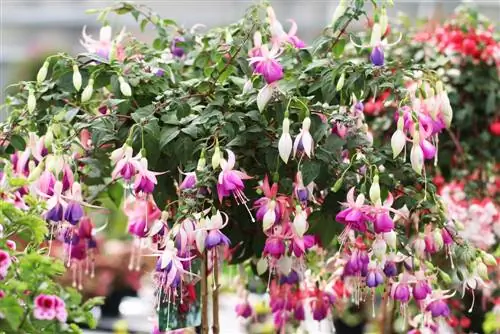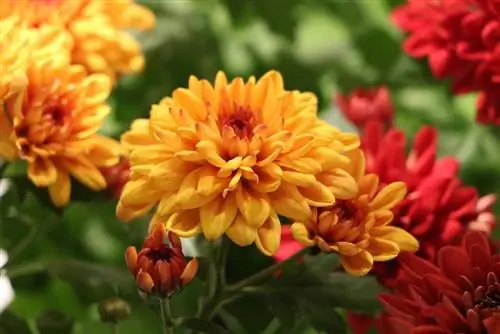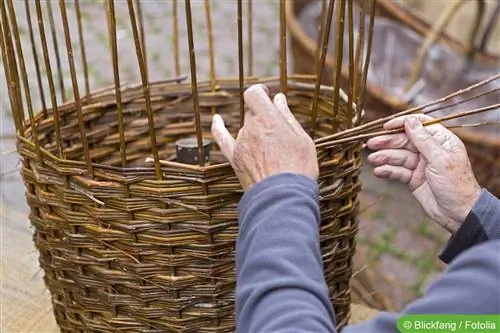- Author admin [email protected].
- Public 2023-12-17 03:39.
- Last modified 2025-01-24 12:45.
Decorative baskets (Cosmea) are very popular due to their large flowers and their edibility as well as their long flowering period. But are decorative baskets hardy and perennial? Everything you need to know about it can be found in the guide.
Lifespan
In Central Europe, decorative baskets (Cosmos bipinnatus) are considered annual flowering plants that bloom until the first frost and then freeze and die. Theoretically, they should be resown or replanted the following year. However, there are exceptions and a “trick” on how hobby gardeners can enjoy a Cosmea or Cosmee for several years. The varieties play a crucial role, but so does the respective region in terms of the usual winter cold.
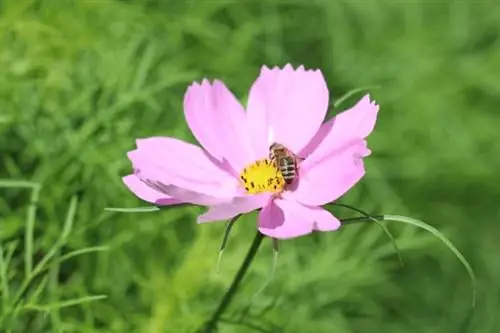
Winter hardiness of jewelry baskets
In principle, every decorative basket falls under non-hardy plants and therefore under annual plants. They belong to hardiness zones 8 to 11. Central Europe predominantly has winter hardiness zones between 6 and 7. This means that for large parts of Germany the decorative basket is not sufficiently hardy and would die in the open field. With winter hardiness zone 8, it can tolerate a maximum of minus 12 degrees Celsius, but this requires reliable protection from the cold and a location within a milder region. These include, for example, the following with winter hardiness zones 8a or 8b:
- Sylt
- Hamburg
- Kiel
- Food
- Lüdenscheid
- Düsseldorf
- Mainz
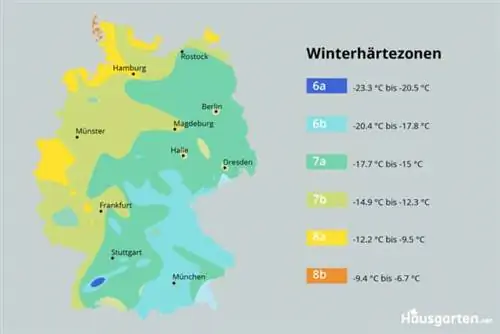
Note:
As soon as the temperature falls below 15 degrees Celsius, a cosmea loses its flowers and dies.
Exceptions: “Perennial” root tubers
Some varieties that form root tubers that can survive the winter are called perennial. Overwintering for these works in a similar way to dahlias. These include the following varieties:
- Chocolate cosmea (Cosmea atrosanguineus)
- Flamingo cosmos (Cosmos peucedanifolia 'Flamingo')
- Yellow Sulfur Cosmos (Cosmos sulphureus)
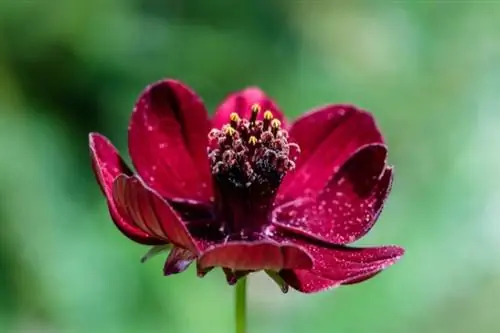
The procedure for overwintering the root tubers is as follows:
- Dig up the root tuber after the flowers have wilted and before the first frost
- suitable winter quarters: ambient temperature frost-free around 5 degrees Celsius and dark
- no winter care required
- plant back into the bed from Ice Saints in mid-May
- Cut back potted plants and move them to winter quarters (no need to dig up)
- Winter care in the pot: occasionally water minimally; no fertilizing
Tip:
If you live in a mild winter region and plant “perennial” decorative baskets, you can also cut back the mother plants completely, leave the root tubers in the bed and cover them thickly with cold protection such as mulch, straw, leaves or brushwood.
“Perennial” from seeds
In order to be able to enjoy your decorative baskets for several years, even without a root tuber and therefore annual specimens, in the following years, you can grow new plants from their seeds. After flowering in September/October, the seeds can be seen as spindle-shaped, dark and narrow grains. These can be removed and stored as well as placed in the ground:
- Store seeds: cool, dry and dark
- Shelf life: two to three years
- prefer indoors or heated greenhouse from March to April
- sow directly into the bed or container from mid-April
- Notice: Jewelry basket is light germinator; When sowing seeds, only cover them thinly with soil
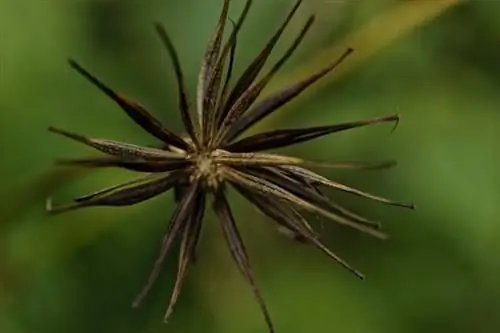
Note:
Seeds from one mother plant do not guarantee color uniformity. Different colored flowers can also develop on the plants.
Frequently asked questions
Are jewelry baskets snail resistant?
Decorative baskets are not tasty for snails. They avoid them, which is why they can be described as snail-resistant.
Are jewelry baskets bee-friendly?
Although cosmoses are not native plants, their flowers offer nectar and pollen, which primarily provide food for bees, but also butterflies. That's why the decorative basket is a real magnet for these and numerous other insects. Another advantage is the long flowering period until autumn, so that they represent an equally long-lasting source of food for bees etc., when most of the other flowering plants have long since faded.
Put one-year-old decorative baskets out of frost early - is that possible?
Yes, that works, but it doesn't bring the desired result of surviving the winter months. Once the seasonal plant has withered, it inevitably dies. The first frost only does its part to speed up this process. It will die even without frost, although the death will then be delayed a little. Therefore, it is useless to change the decorative baskets before the first frost. Only the root tubers can overwinter, which only form in some varieties.


